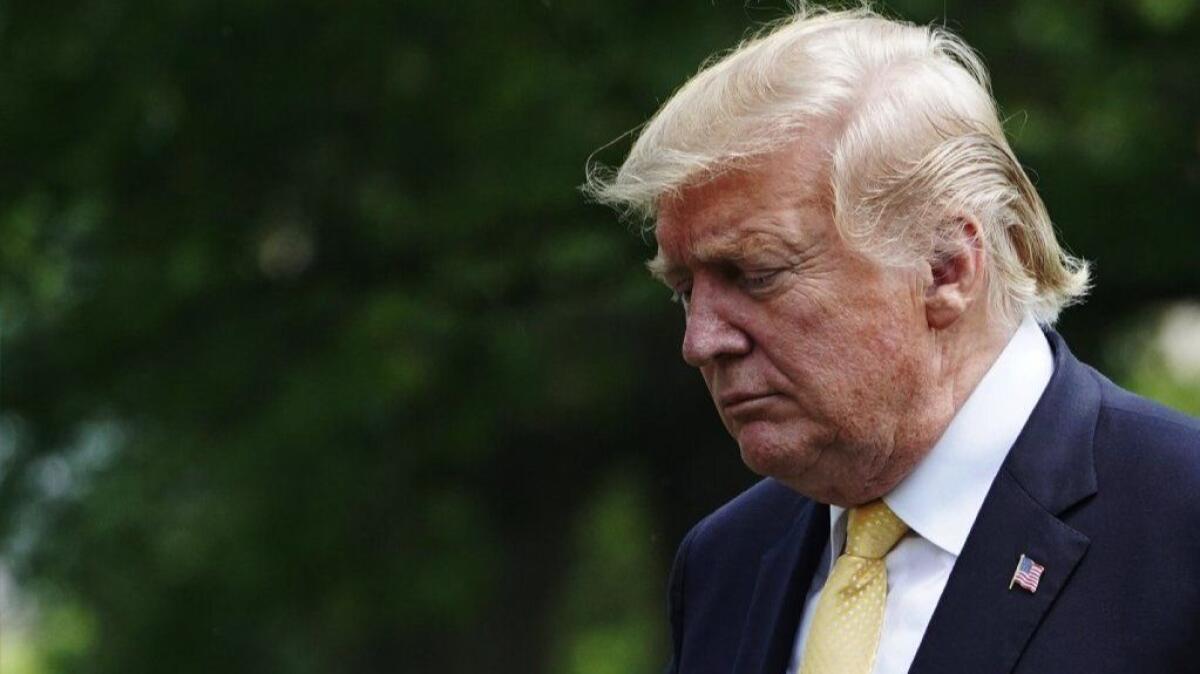Impeachment 101: How could Congress remove President Trump from office?

- Share via
Now that House Speaker Nancy Pelosi has called for an official impeachment inquiry into President Trump, here’s how the impeachment process works:
How does impeachment start?
Typically, impeachment begins with a vote by the House of Representatives to instruct the Judiciary Committee to determine whether there are sufficient grounds for Congress to impeach the president. The Constitution provides Congress only vague guidance, saying impeachment is warranted for “treason, bribery, or other high crimes and misdemeanors.”
The inquiry likely would consist of public hearings with experts and requests to the Trump administration for more information. Later, the committee could write up articles of impeachment and vote on whether to send it to the full House for consideration.
What would the House vote on?
The House would vote on the articles of impeachment, which are formal written charges against the president, and whether Trump should be impeached. If successful, the articles would go to the Republican-controlled Senate. The Senate would decide whether to hold a trial and whether Trump should be removed from office. Two-thirds support of the Senate is required to convict. No Senate Republican has signaled support for impeachment, so the effort almost certainly would end at the Senate’s doorstep.
Does starting an inquiry mean the House will go through with impeachment?
No. An inquiry is merely an investigation that could lead to articles of impeachment brought before the House. It may end with a decision not to pursue impeachment.
Does an inquiry give Democrats more power to investigate?
Maybe. Advocates of an impeachment inquiry say federal courts — where several of Congress’ investigations have detoured or may end up — are more likely to uphold the legislative branch’s subpoena power if it is part of an impeachment inquiry.
Michael Conway, who was on staff with the House Judiciary Committee when it conducted impeachment proceedings against President Nixon during Watergate, argues that Congress’ power reaches its peak during an impeachment.
How often has Congress used its impeachment powers?
No president has been removed from office by Congress. But the threat of removal forced President Nixon to resign in 1974. And two presidents — Bill Clinton in 1998 and Andrew Johnson in 1868 — were impeached by the House but not convicted by the Senate.
In its history, the House has impeached only 17 other people: 15 federal judges, one senator and one Cabinet member. Only eight — all federal judges — were convicted by the Senate and removed from office.
More stories from Jennifer Haberkorn »
More to Read
Get the L.A. Times Politics newsletter
Deeply reported insights into legislation, politics and policy from Sacramento, Washington and beyond. In your inbox twice per week.
You may occasionally receive promotional content from the Los Angeles Times.











